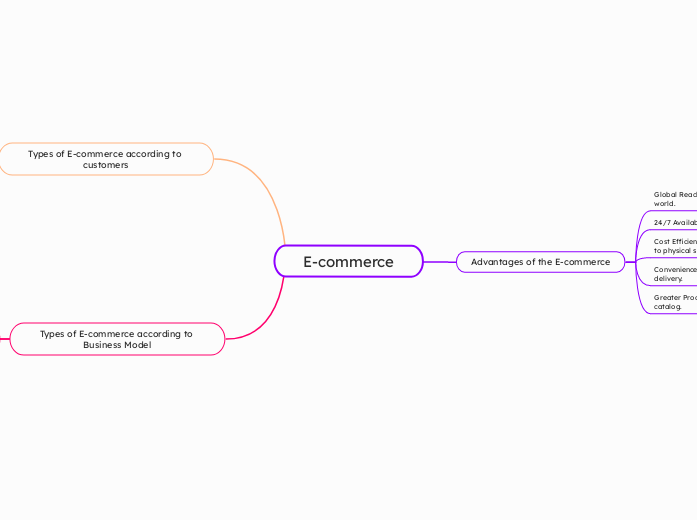によって Daniela Lozano 2日前.
5
E-commerce
E-commerce offers numerous advantages, including cost efficiency due to lower operating expenses compared to traditional stores, and global reach, allowing customers to shop from anywhere in the world.
開く
E-commerce Types of E-commerce according to Business Model Marketplace: A platform that allows third parties to sell products or services (e.g. eBay, Amazon). Direct Sales: Businesses sell products directly to consumers without a middleman (e.g. Apple Store). Freemium: Free access with paid options for additional features (e.g. LinkedIn, Dropbox). Subscription-based: Users pay a recurring fee to access products or services (e.g. Netflix, Spotify). Types of E-commerce according to customers B2G (Business to Government): Companies that sell products or services to government entities. C2C (Consumer to Consumer): Consumers that sell to other consumers, such as on platforms like eBay or Mercado Libre. B2C (Business to Consumer): Companies that sell directly to end consumers (Amazon, online stores). B2B (Business to Business): Transactions between companies, such as wholesalers or suppliers. Advantages of the E-commerce Greater Product Variety: Access to a broader catalog. Convenience: Buy without leaving home, direct delivery. Cost Efficiency: Lower operating costs compared to physical stores. 24/7 Availability: Stores are open all the time. Global Reach: Accessible from anywhere in the world.

